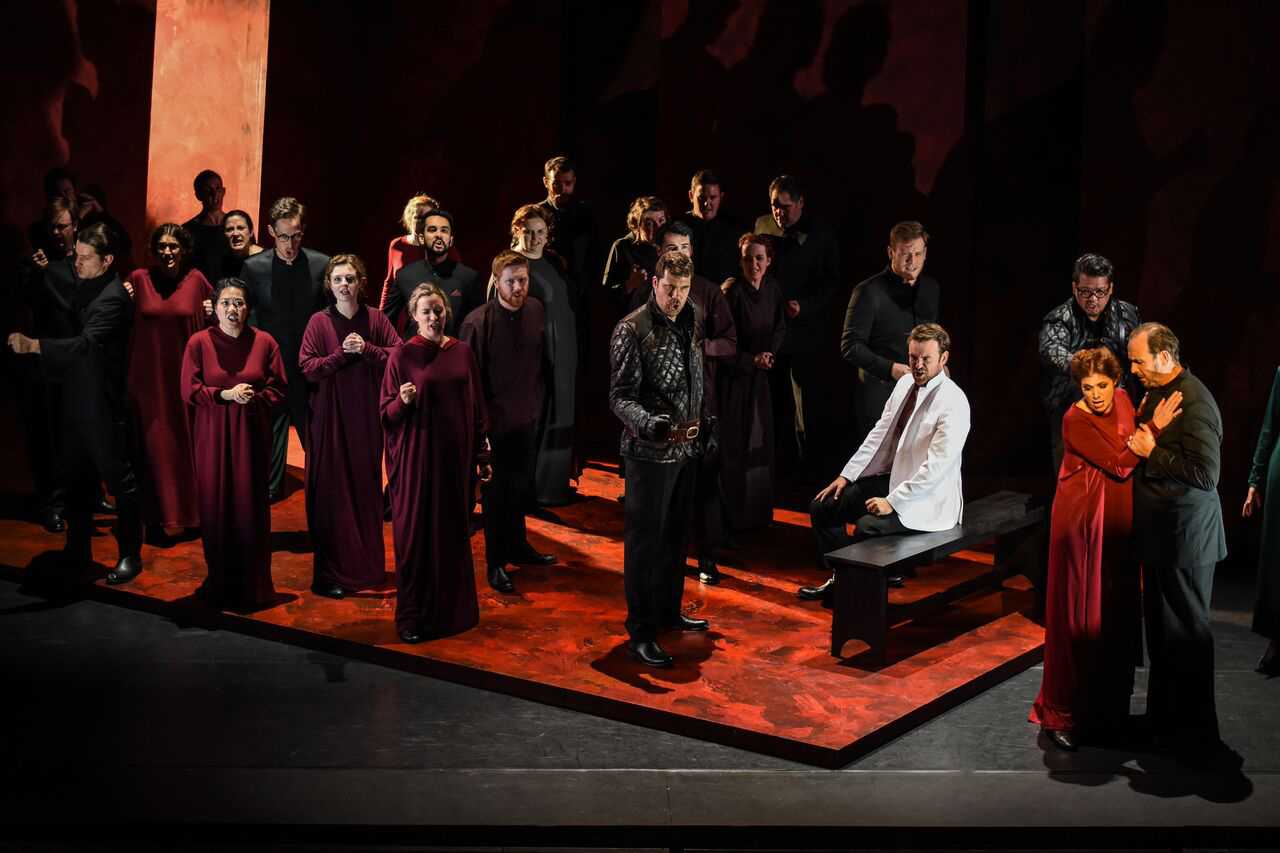PRG XL Video supplies Buxton International Festival
- Details

PRG XL Video supported lighting designer Mike Gunning, and production electrician Tim Ball, with a theatrical lighting package for the three operas headlining this year’s festival at the Buxton Opera House: Verdi’s Macbeth, Britten’s Albert Herring, and Mozart’s Lucio Silla.
Although its heritage can be traced farther back, the current format of the Buxton Festival has been running since the refurbishment of the opera house in 1979 - and has grown to become the highly respected cultural event it is today. Drawing crowds from far and wide, patrons of the Buxton Festival know what they want to see, and what they don’t. Tim Ball explained: “The prestige of the productions we put on at Buxton need to be of the highest standard, our audiences expect our offerings to rival anything that may be seen at the big opera houses in capital cities around the world.”
Tim has been closely involved with the festival for over 15 years, and describes the 17-day event as one of the highlights of his year. He discussed what it takes to oversee the practicalities of lighting three operas in rep at a festival like Buxton: “One of the biggest challenges we face is the schedule - we begin our load in on Monday morning and by Tuesday evening we need to be ready for the first rehearsal. This timeframe would be tight for fitting up one show, but we are essentially hanging three different rigs concurrently
“With practicality in mind, we opted to use moving lights where possible, rather than purely generic lighting fixtures - that way we can have a compact and manageable rig with less time spent refocussing between shows.”
Mike Gunning was appointed to the role of lighting designer for all three operas, and explained how he approached the project: “I started off by looking at each opera individually, drawing in the lighting fixtures need to achieve the specific lighting looks for each production, I then added a number of supplementary generic lights, which would be used for all three shows.”
For each opera, Mike is working with different designers and directors. All three productions are dramatically different to one another. “Macbeth is a traditional grand opera - like one would expect to see in Covent Garden, or at The Coliseum. Designer Russell Craig created an asymmetric set with slanted walls, which uses a lot of red and dark blues. I use powerful and moody lighting to help tell the story, lighting large parts of the opera from the side - creating big, dramatic shadows. I’m very pleased with what we’ve done for Macbeth.”
Mike emphasised that the three operas are very, very different from each other, so much so that for those watching all three productions, wouldn’t believe the trinity of operas were lit by the same lighting designer. Mike continued his insight into lighting the operas at this year’s Buxton Festival: “Albert Herring is a very British opera, lit in a classical and naturalistic way - it’s set in a conservatory, a shop, a street and a town hall. I used a lot of tungsten lighting to make it look realistic.
The lighting and set for Lucio Silla is a lot more abstract. The set comprises of three large steel walls, with a very thin gauze stretched over them and is back-lit using GLP Impression LED wash lights, whose shift in colours reflect the changing moods of the different arias in the opera. The design for Silla is all about the interpretation between the floor and walls, and how they interact with each other to define the scene and space within which the opera is set.”
Mike’s choice of lighting fixtures is a modest inventory - very cleverly used to achieve a subtly dramatic effect. The rig comprises of Vari-Lite VL1000 A/S and Martin MAC TW1 moving lights, with GLP Impression RZ LED wash lights and a selection of ETC Source4 generic lights, some of which are fitted with coloured scrollers to add some variation to the acting lights at the front.
All three operas are predominantly lit from above and the side, with Mike cautious of using too much front light, for fear of flattening out the looks on stage. In-house Strand followspots are used delicately and sparingly throughout the shows.
Mike is assisted by lighting programmer Ian Wilson, who used an ETC EOS lighting console to program the lights, before transferring the show files to an ION for the run.
PRG XL account director, Jon Cadbury, oversaw the company’s involvement. “This is our second year supporting the festival, we couldn’t be happier - it’s great to be involved with such a creative and culturally diverse production. Tim and Mike have exceptionally high standards, and know exactly what the need to make things happen. It’s a pleasure working with them.”
(Jim Evans)















